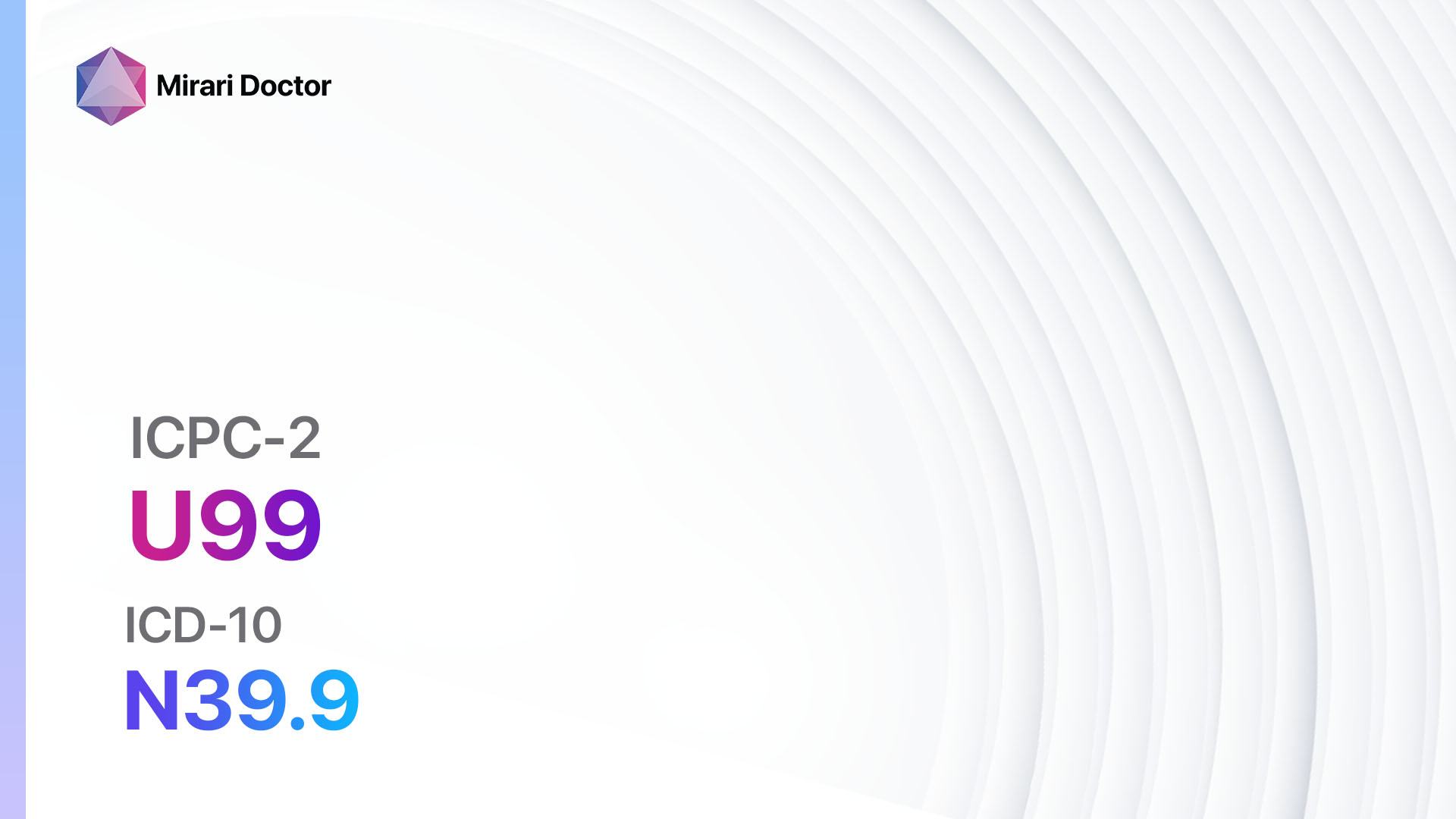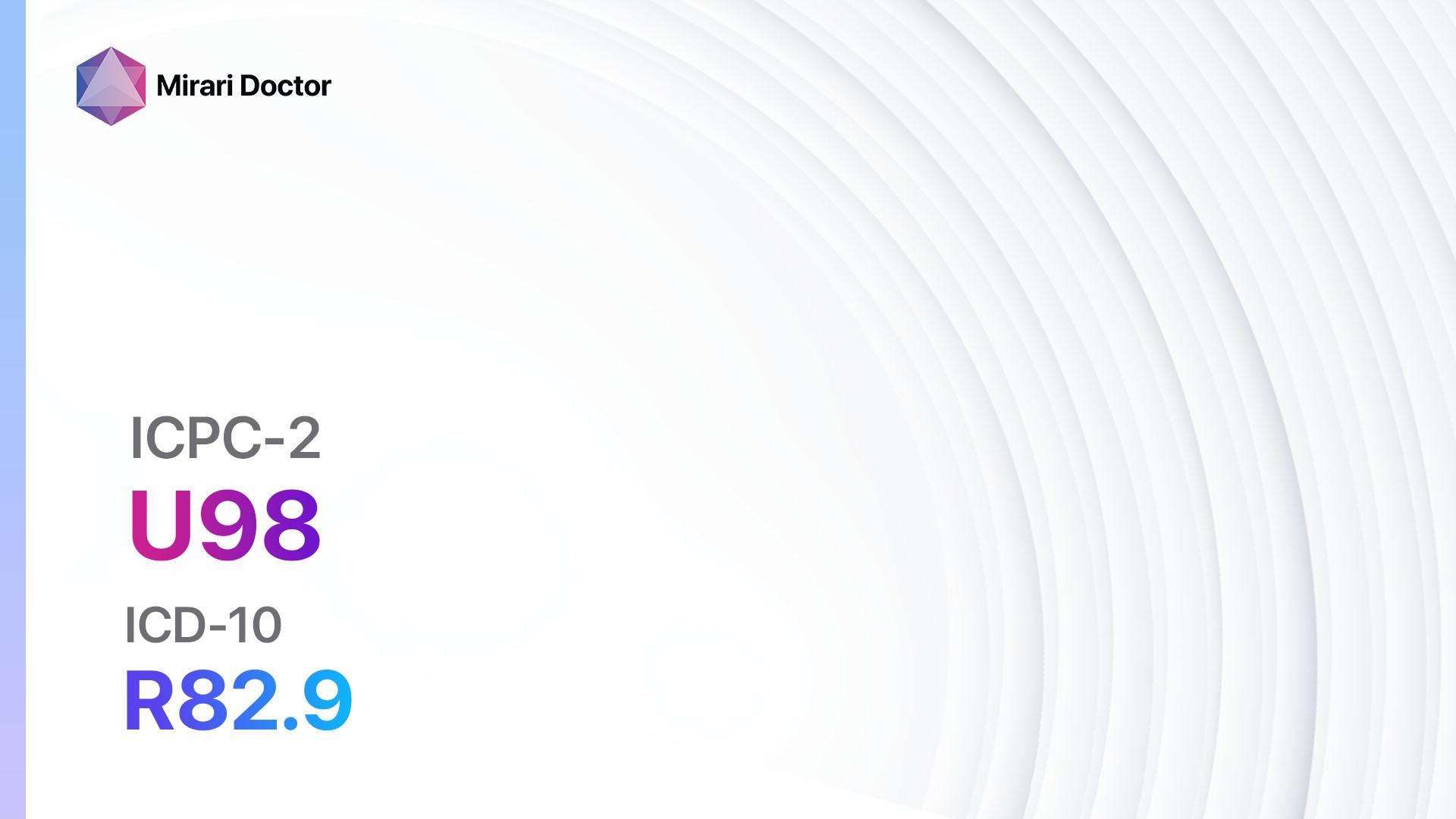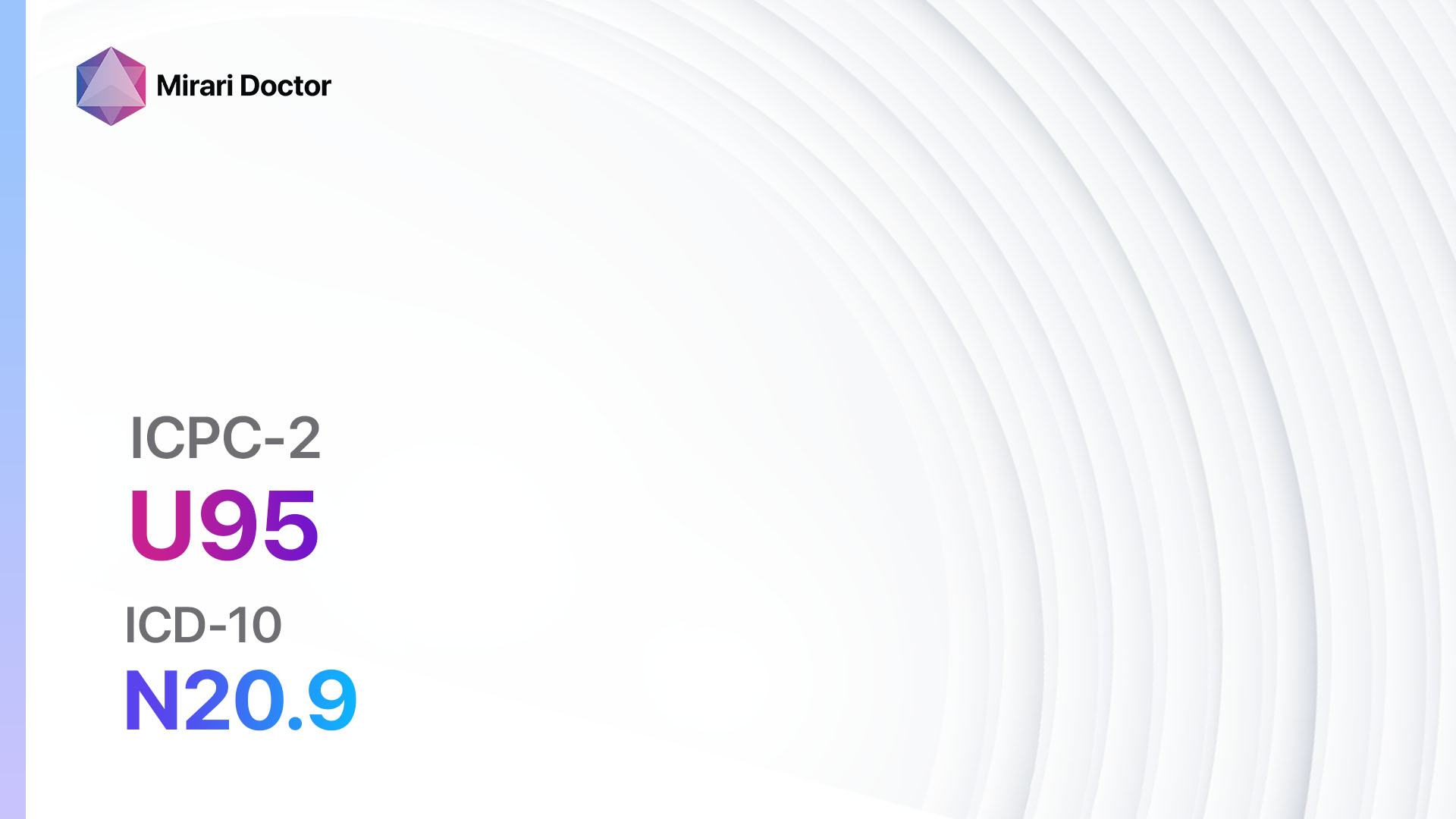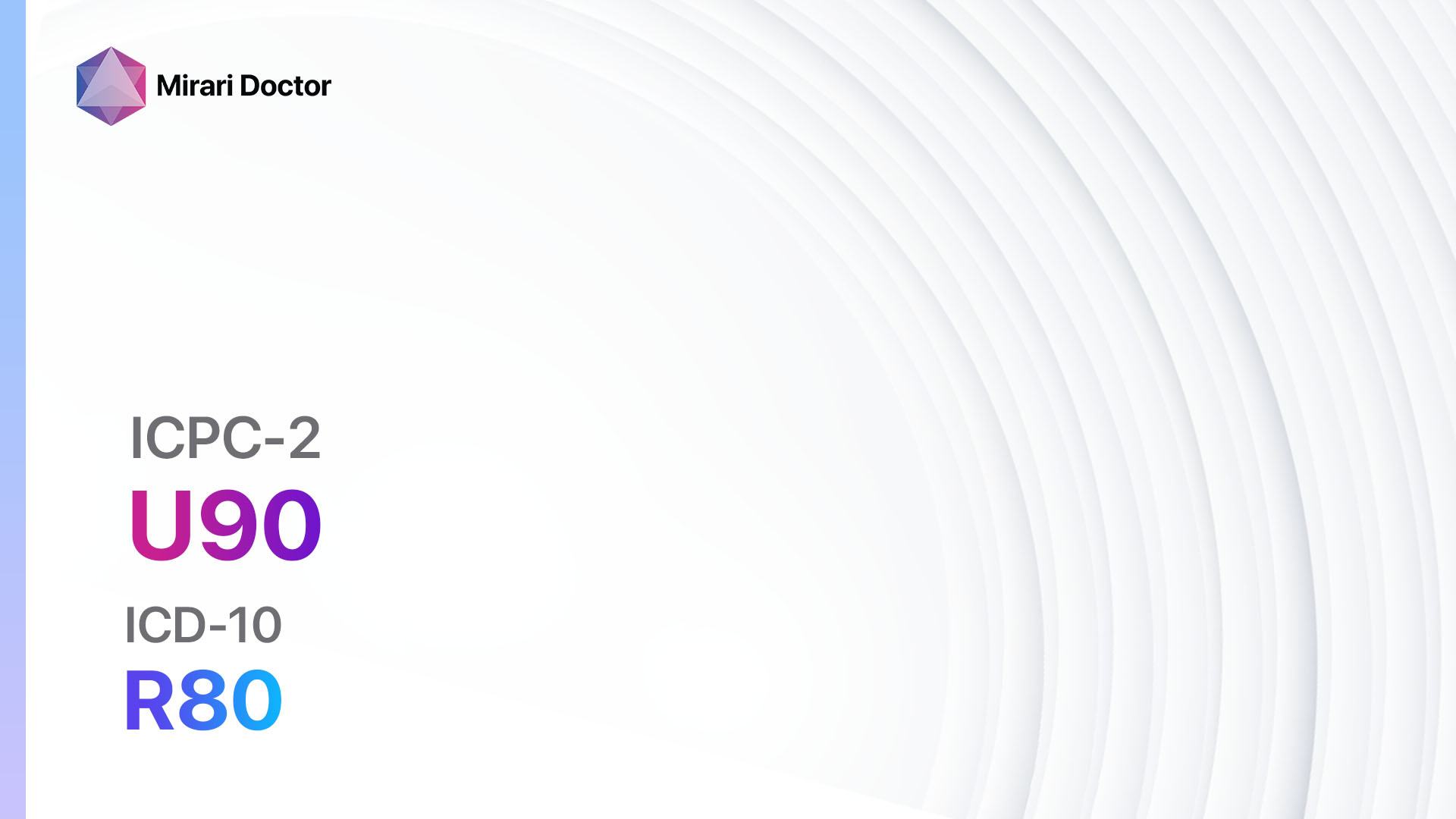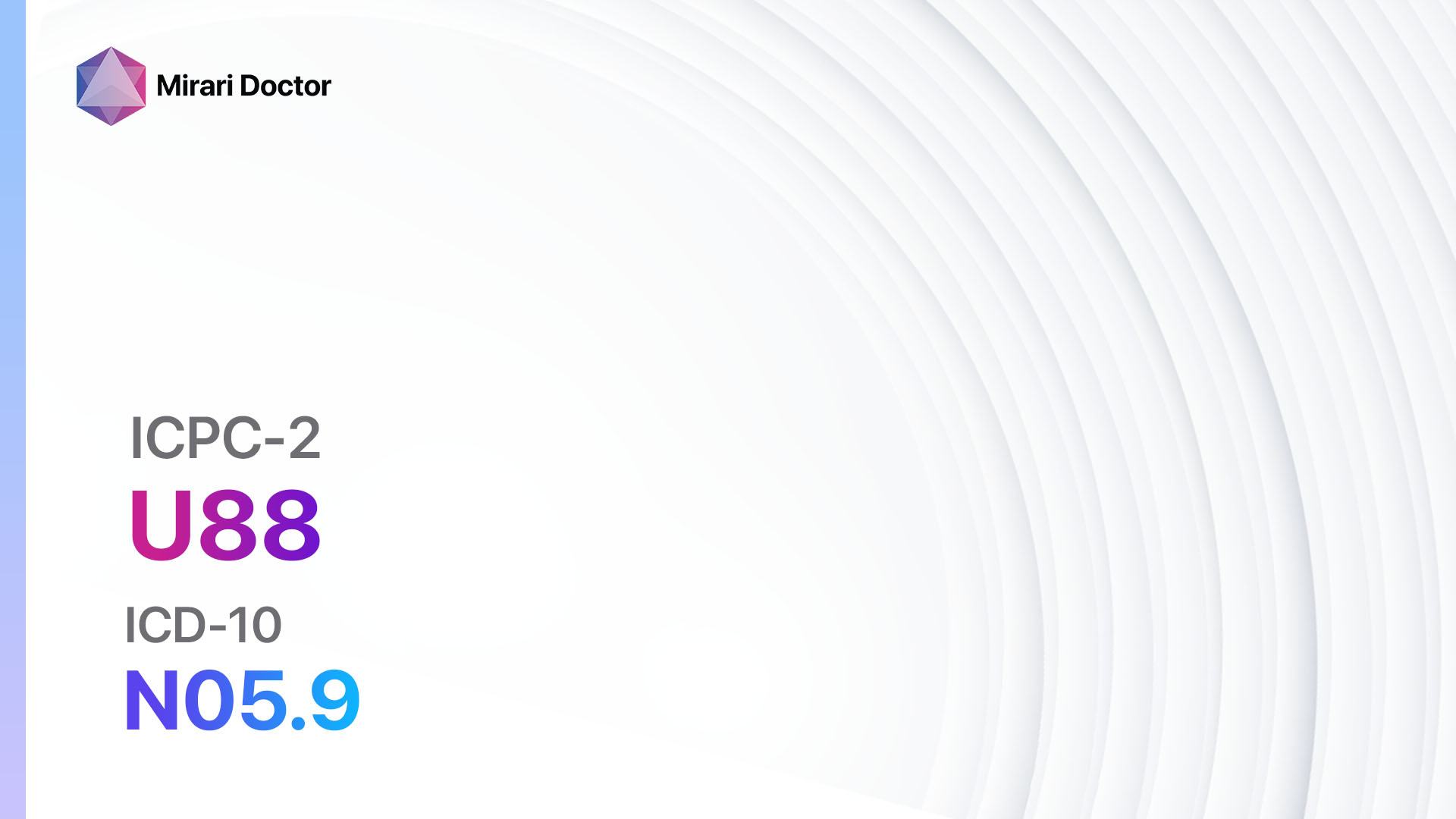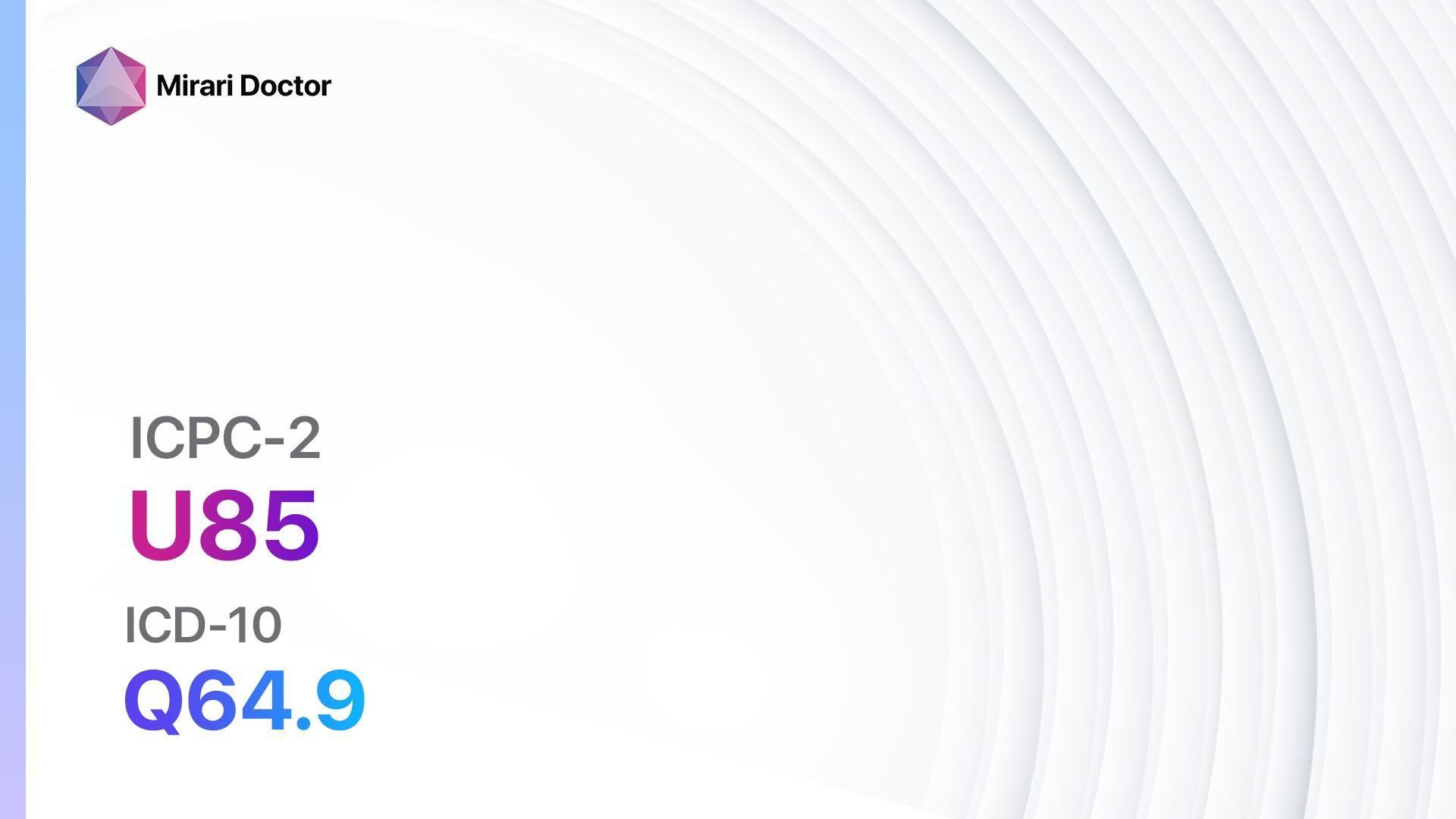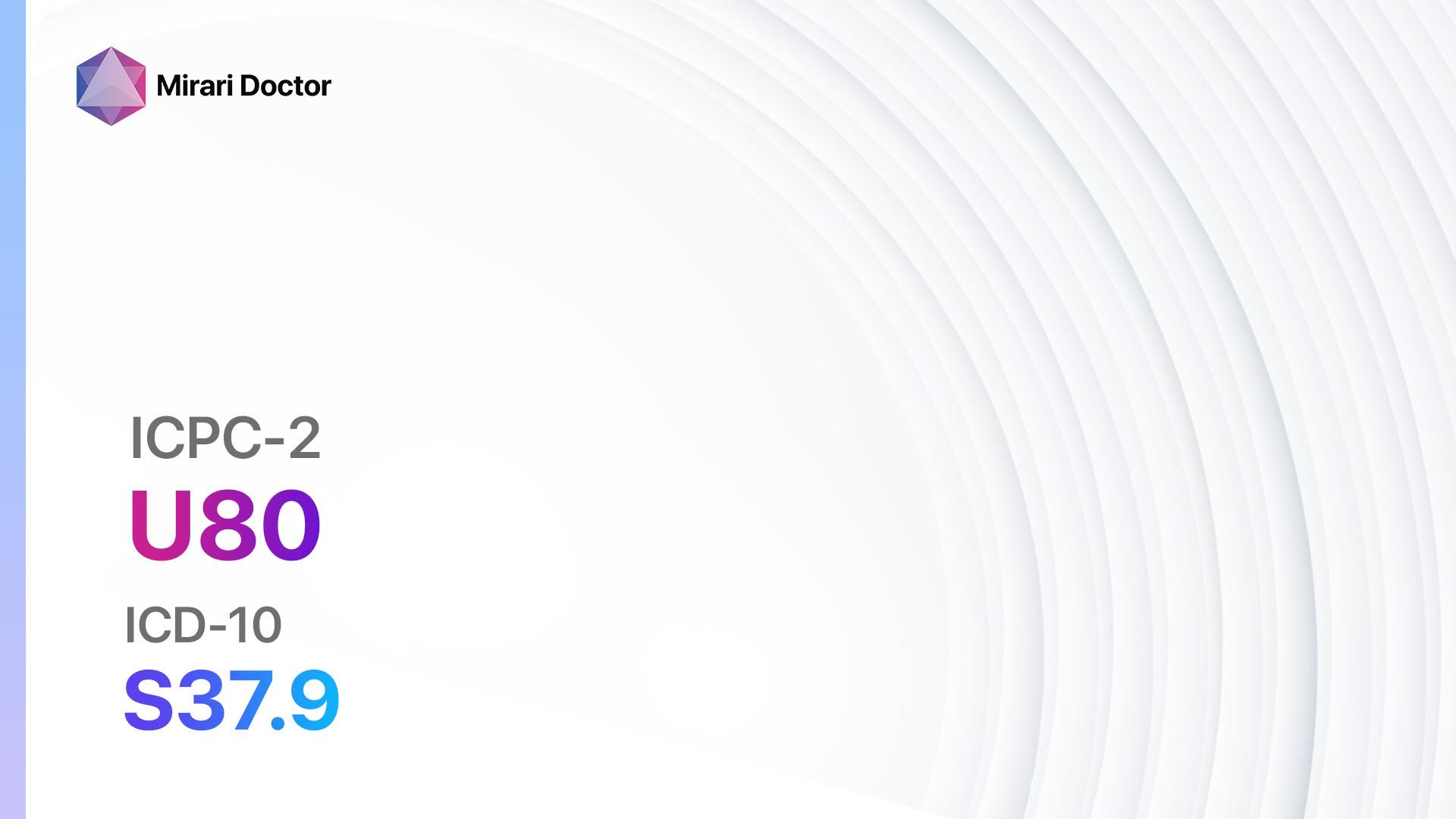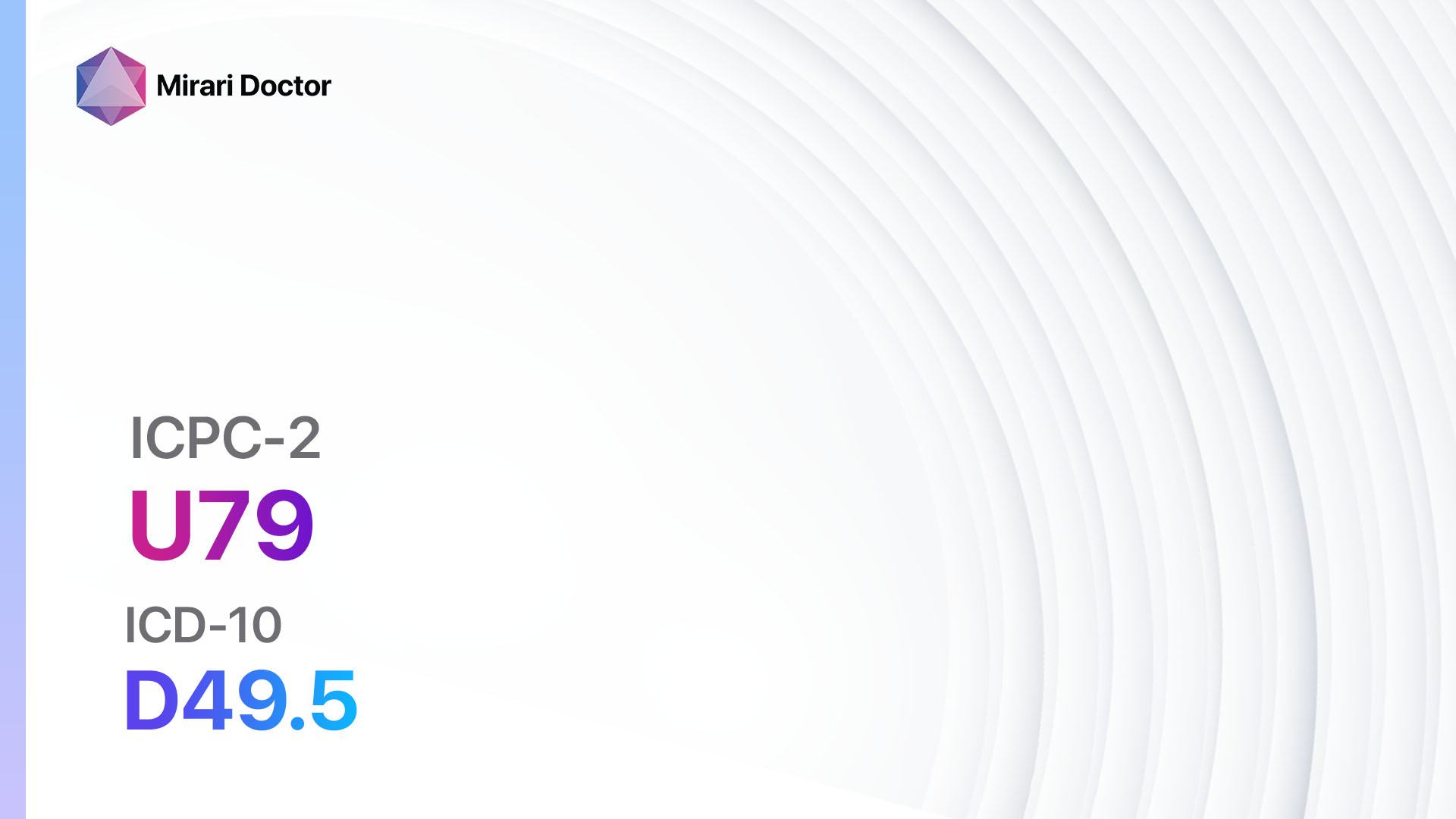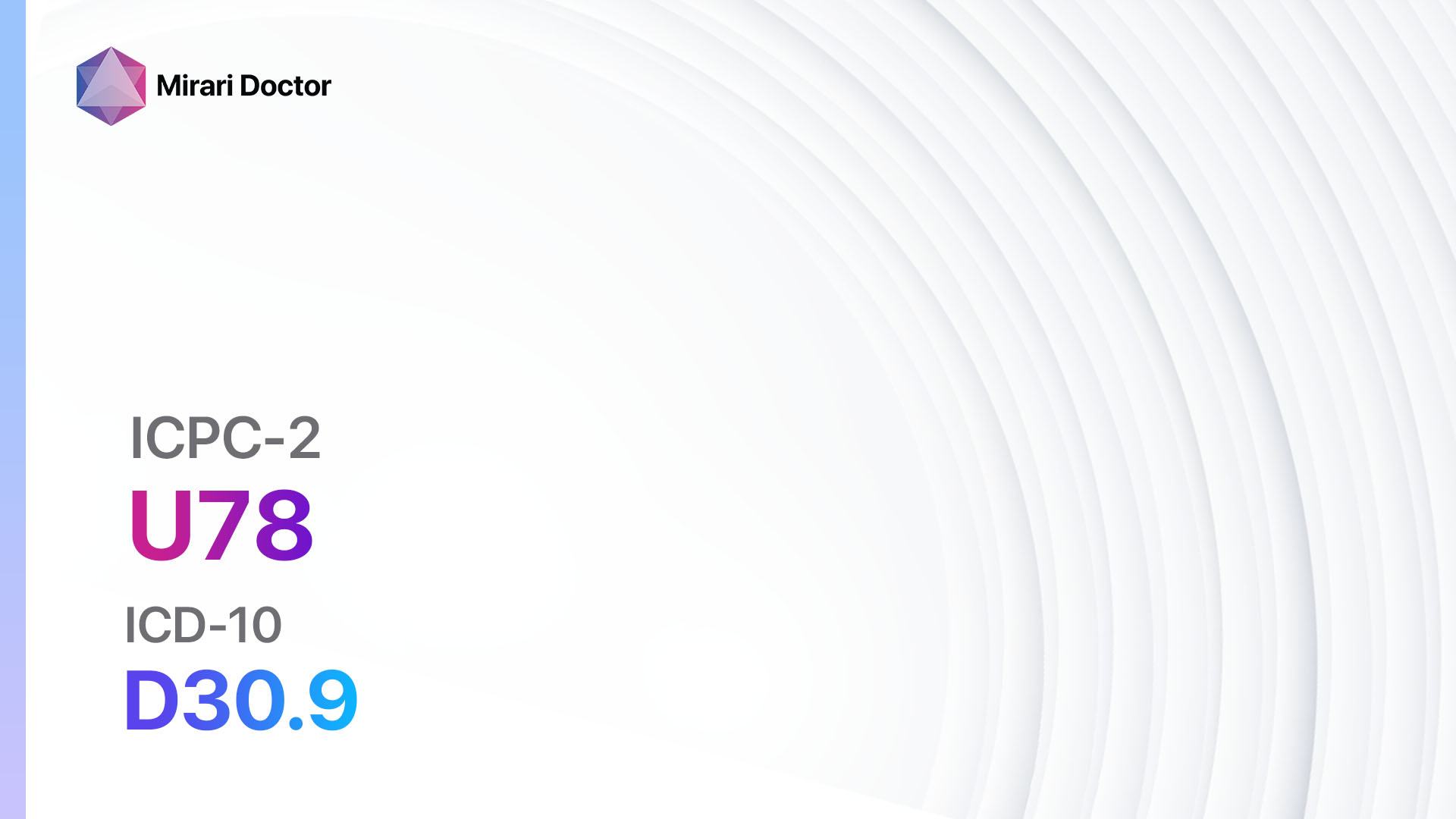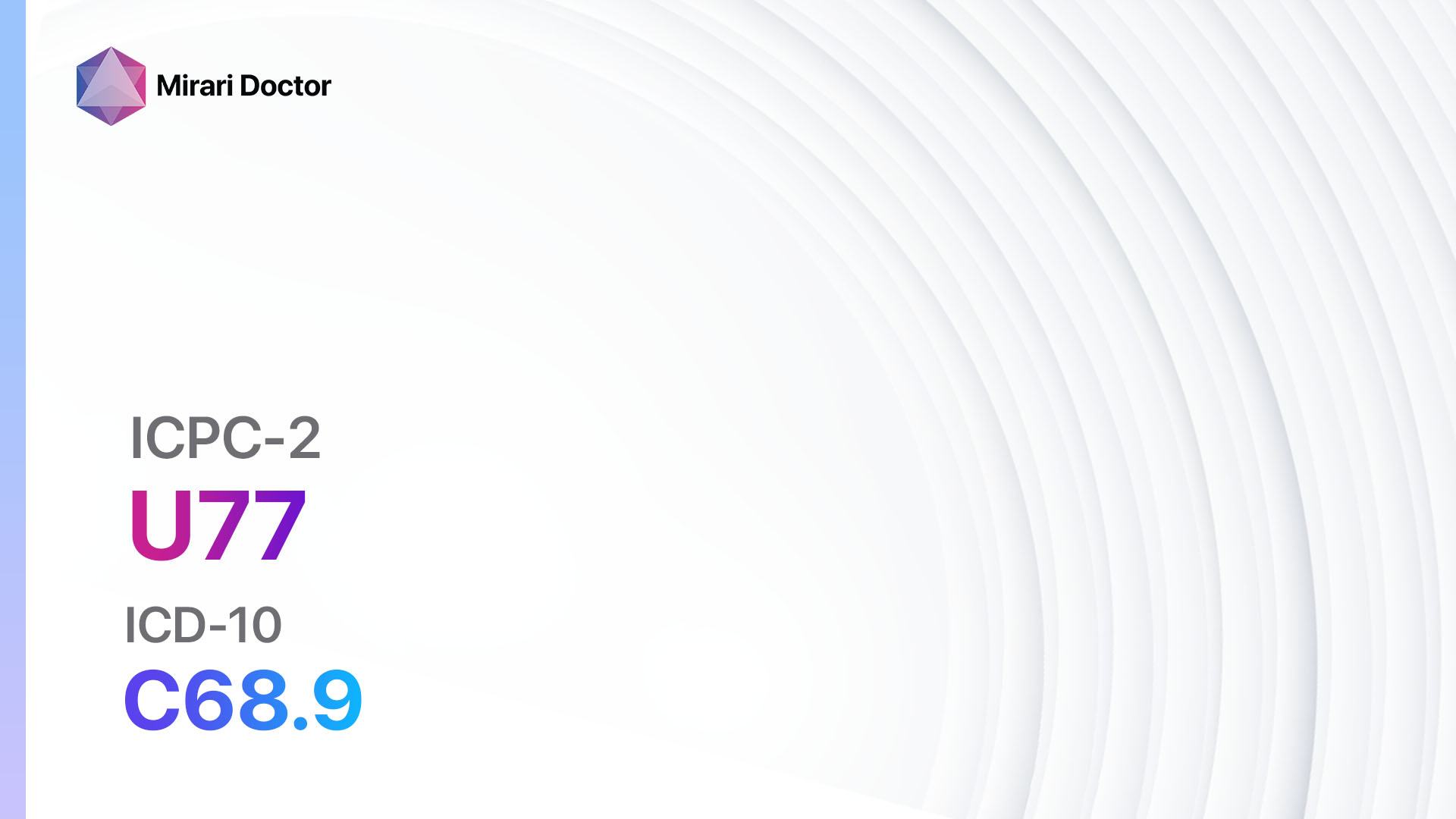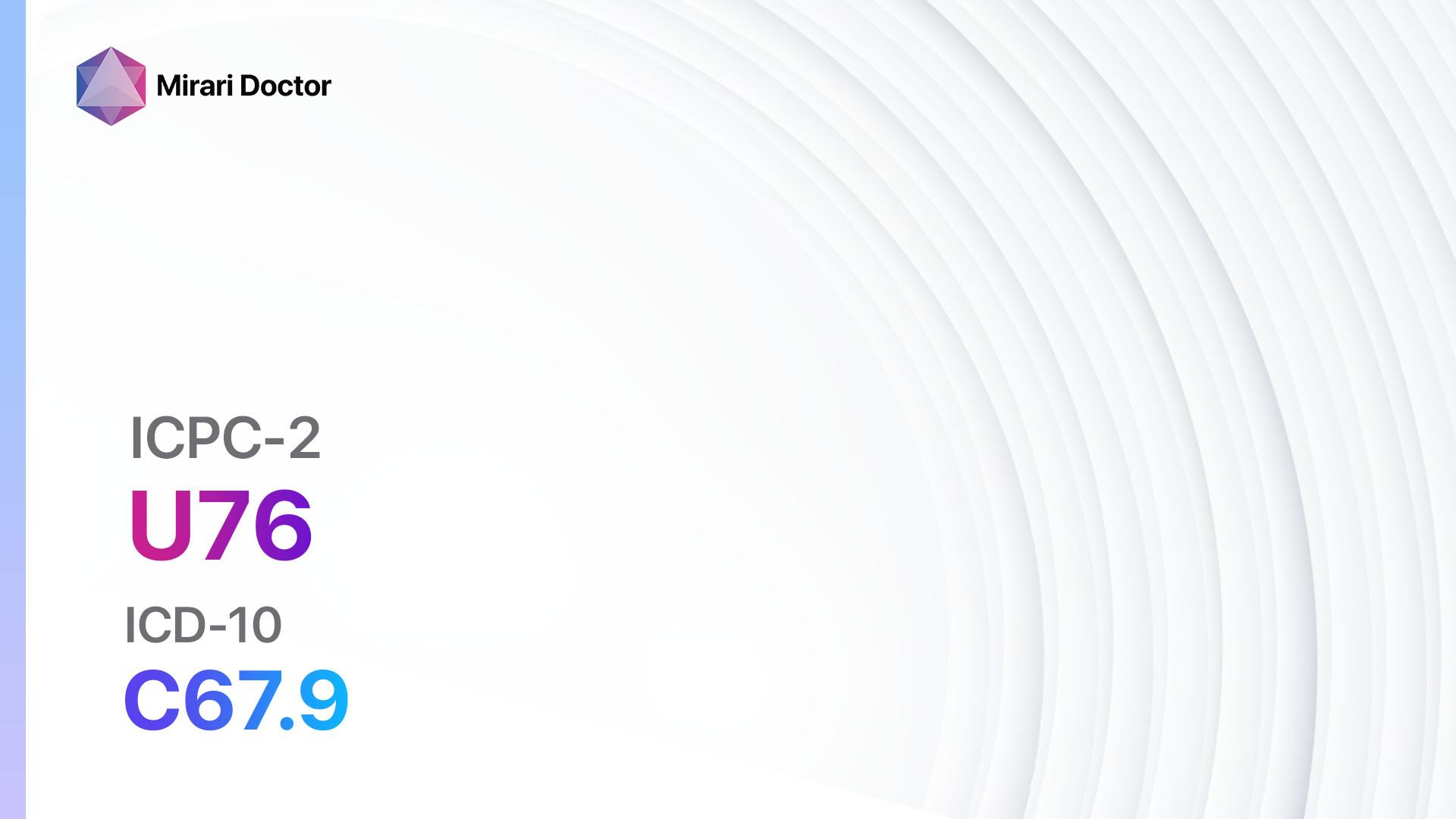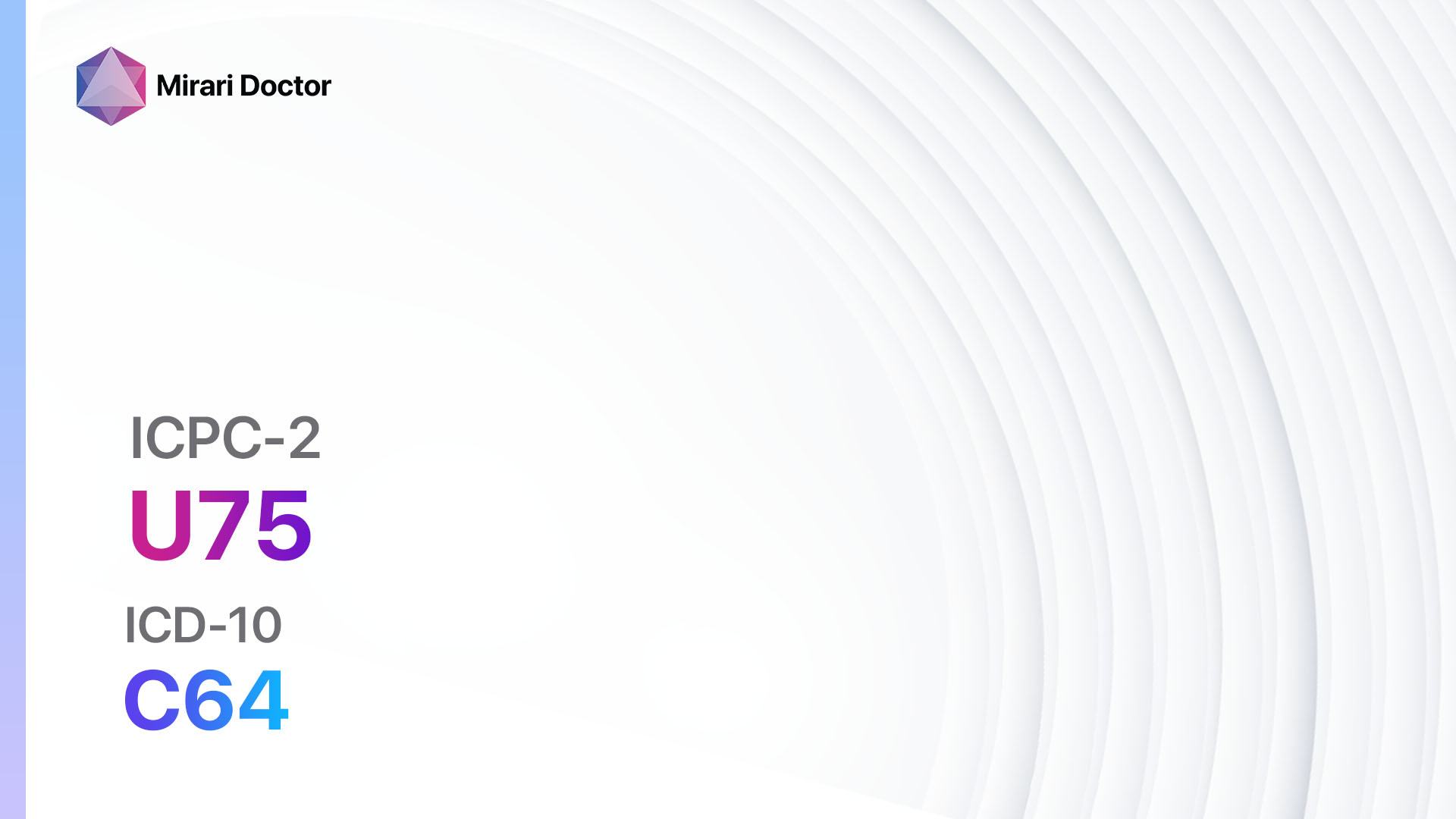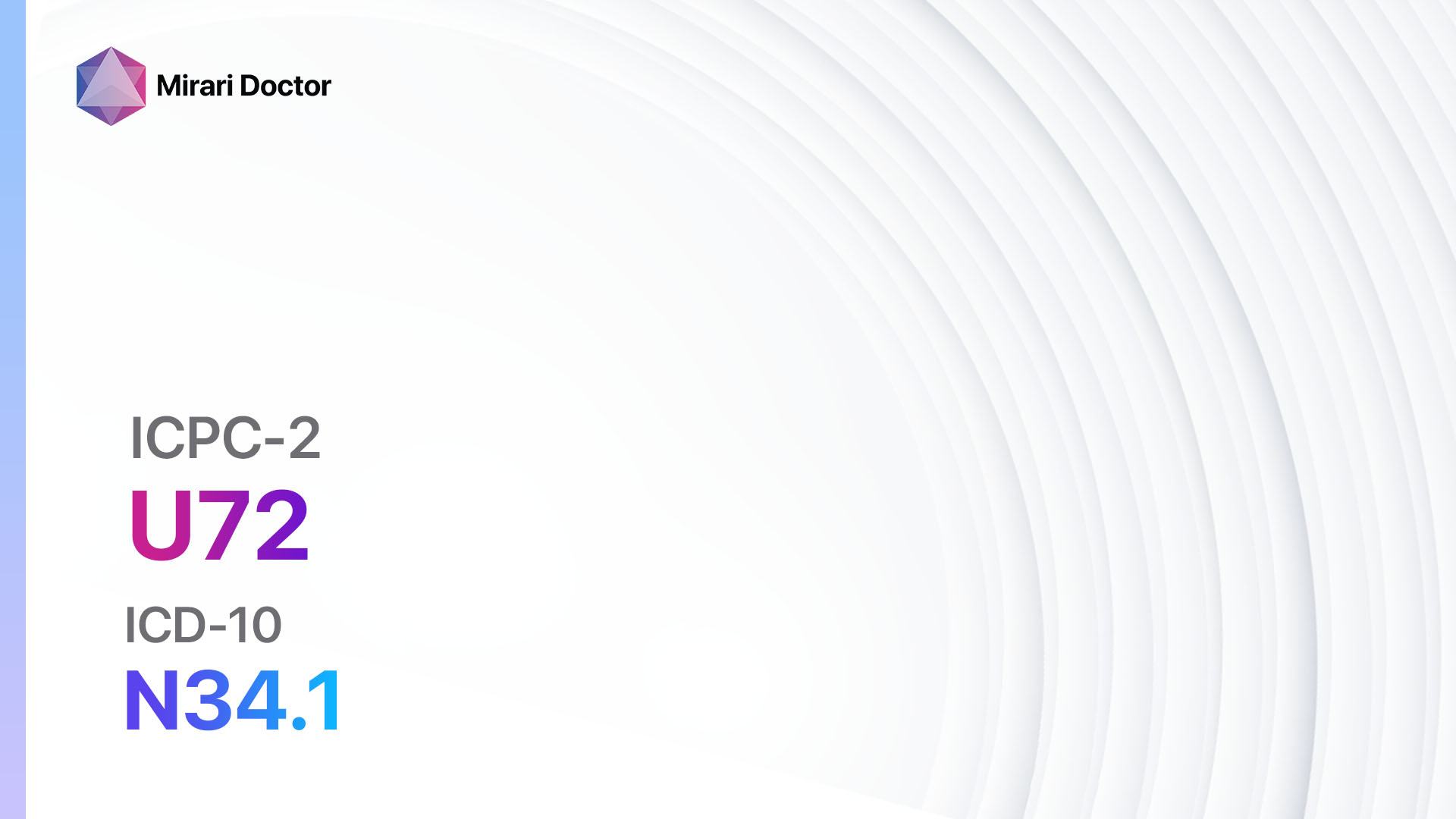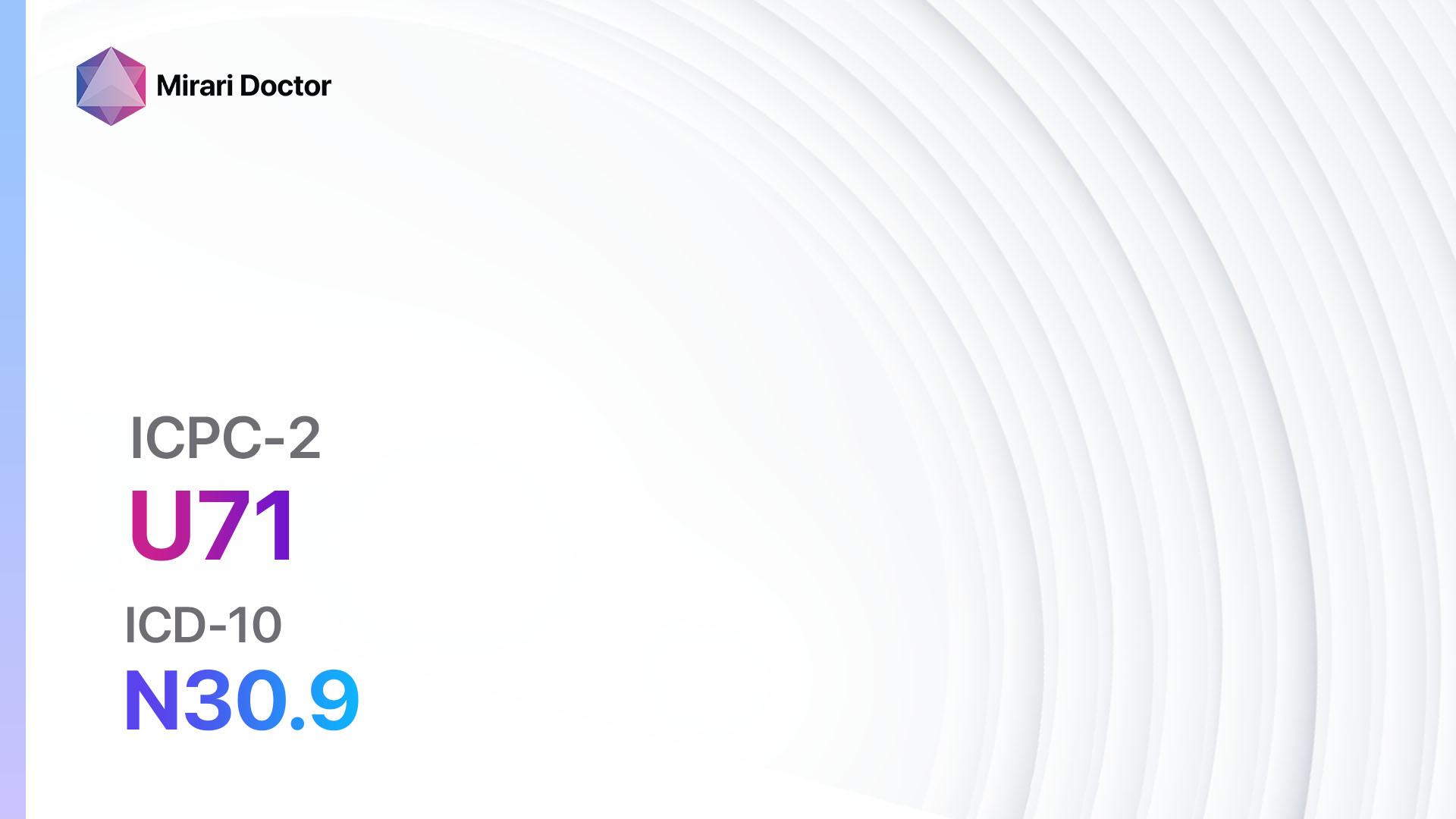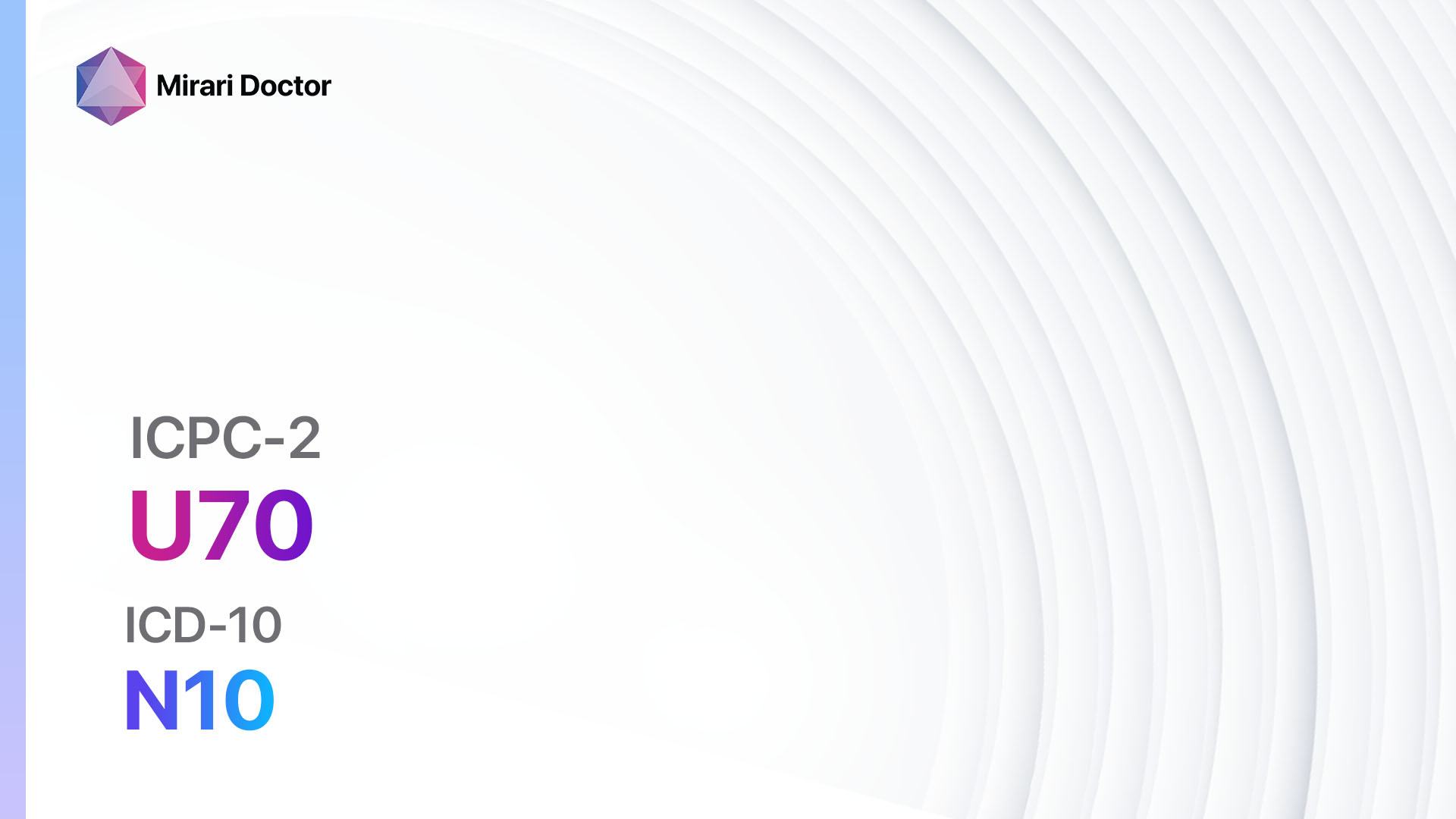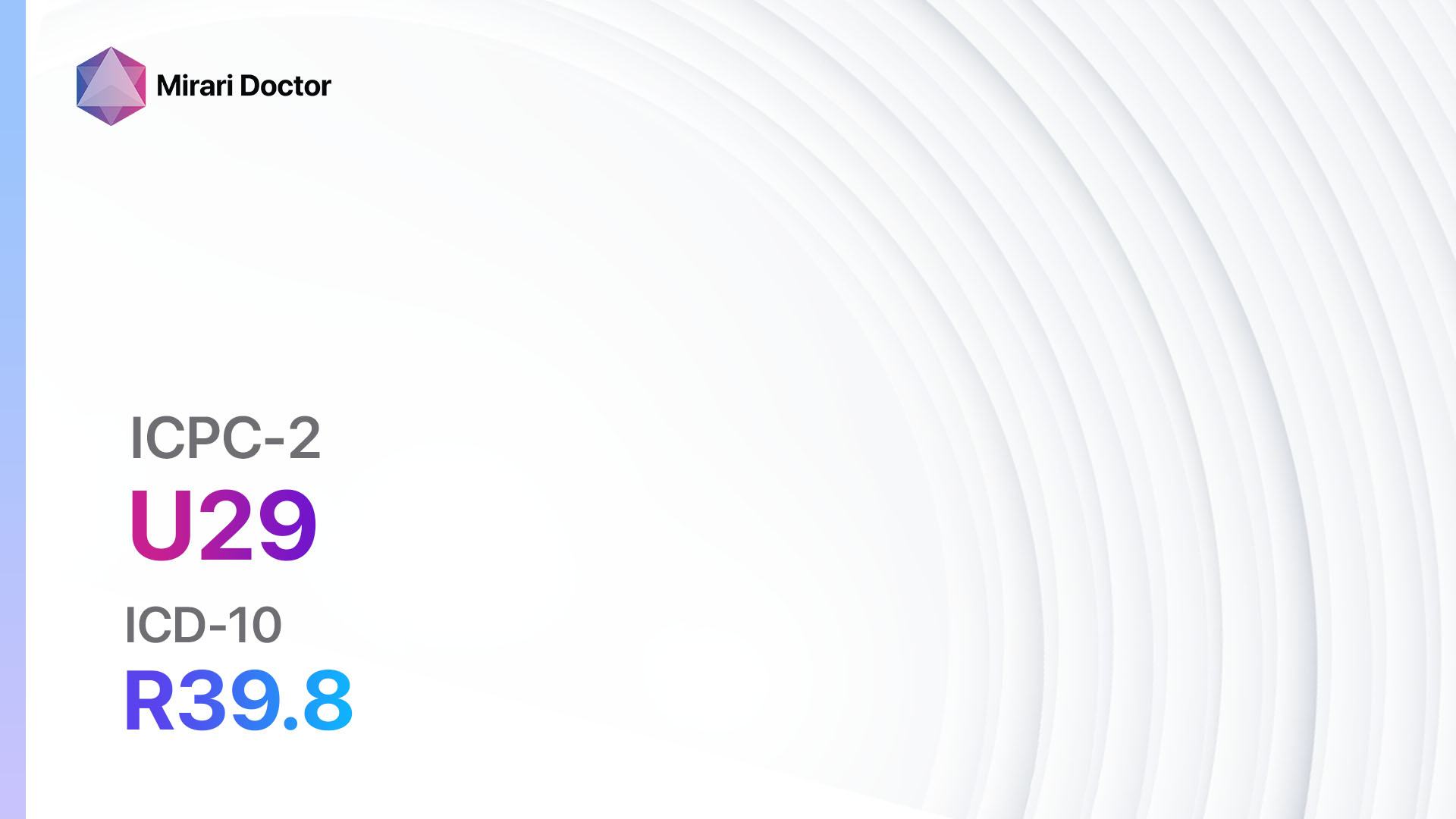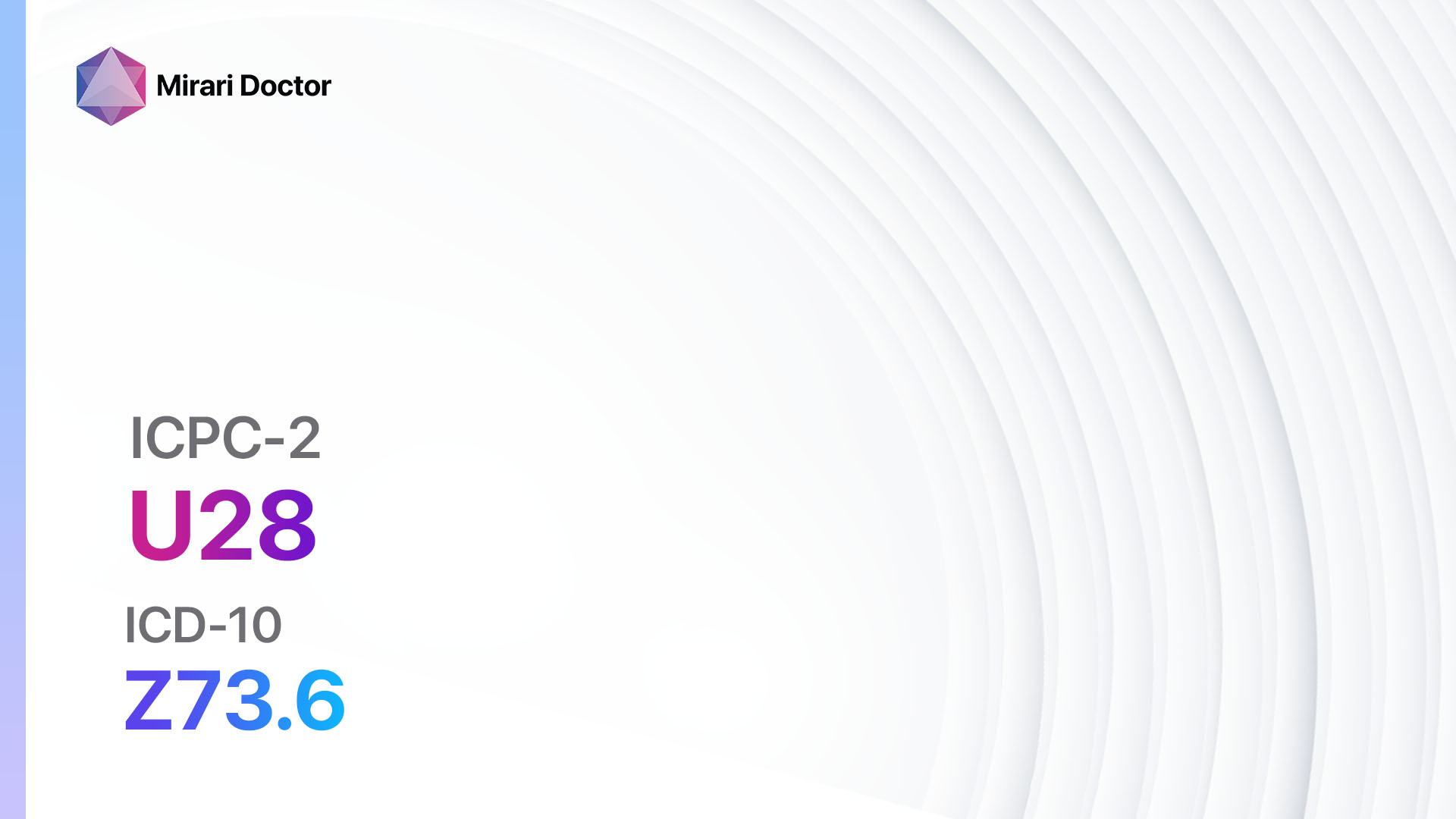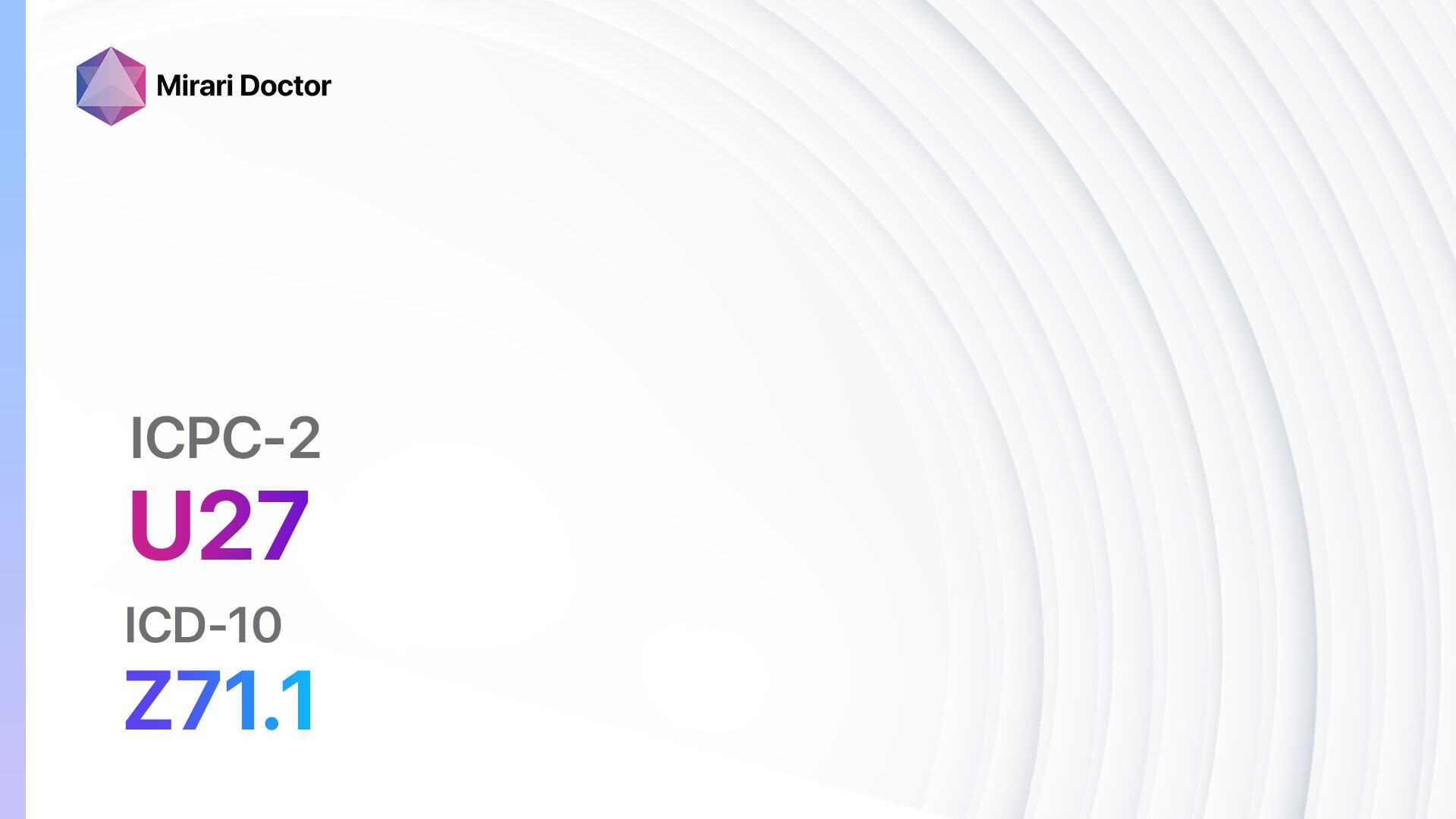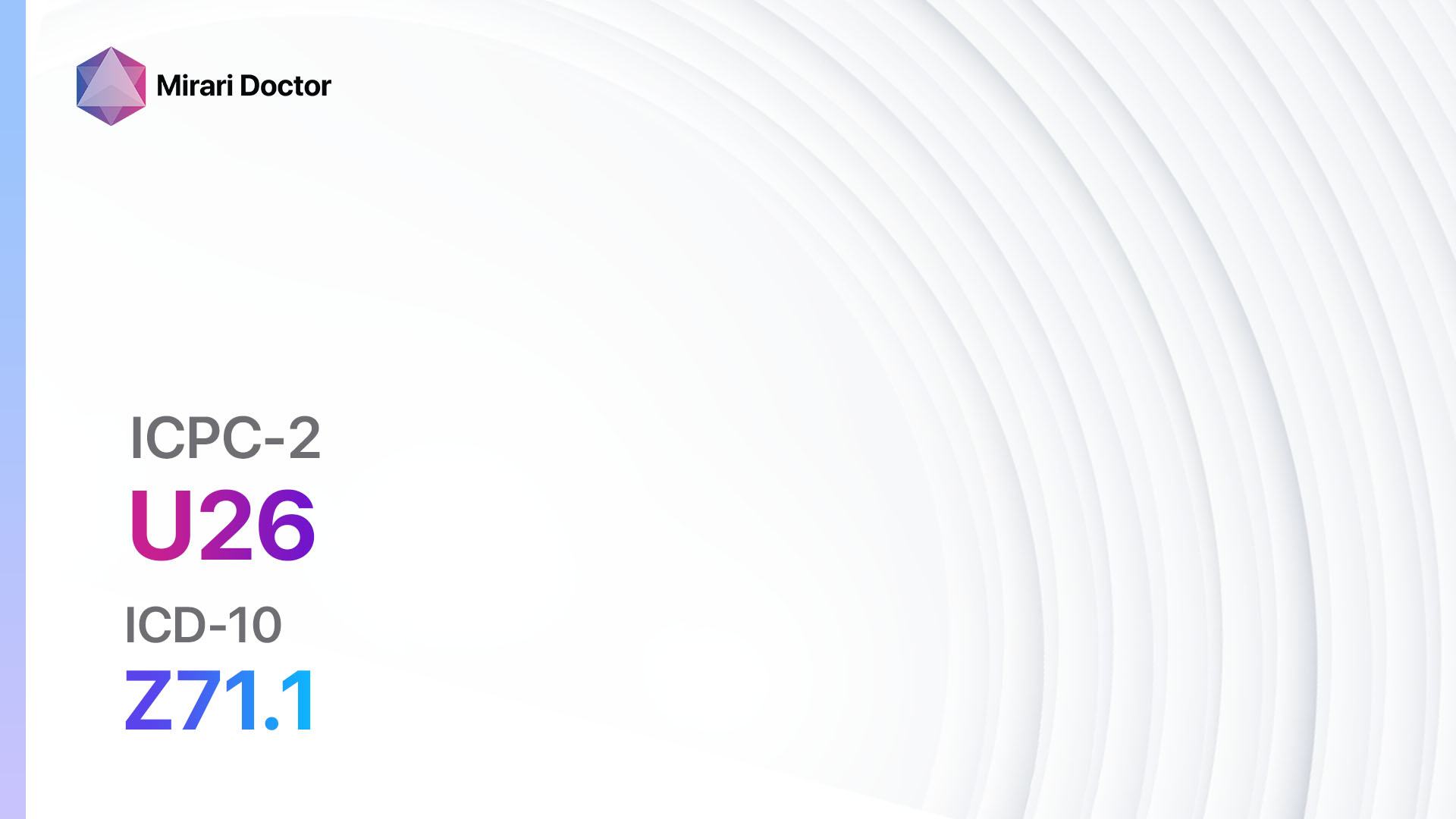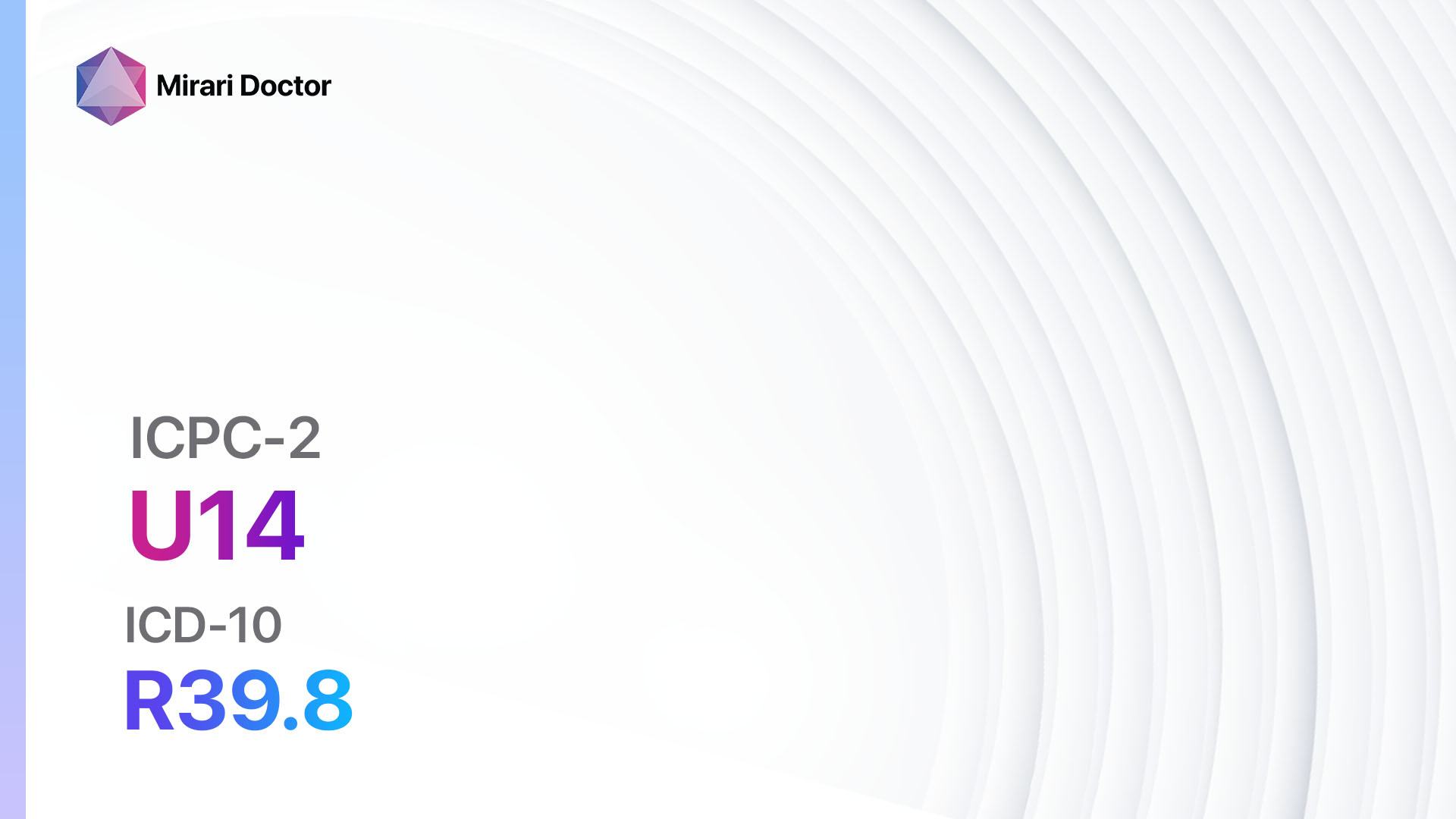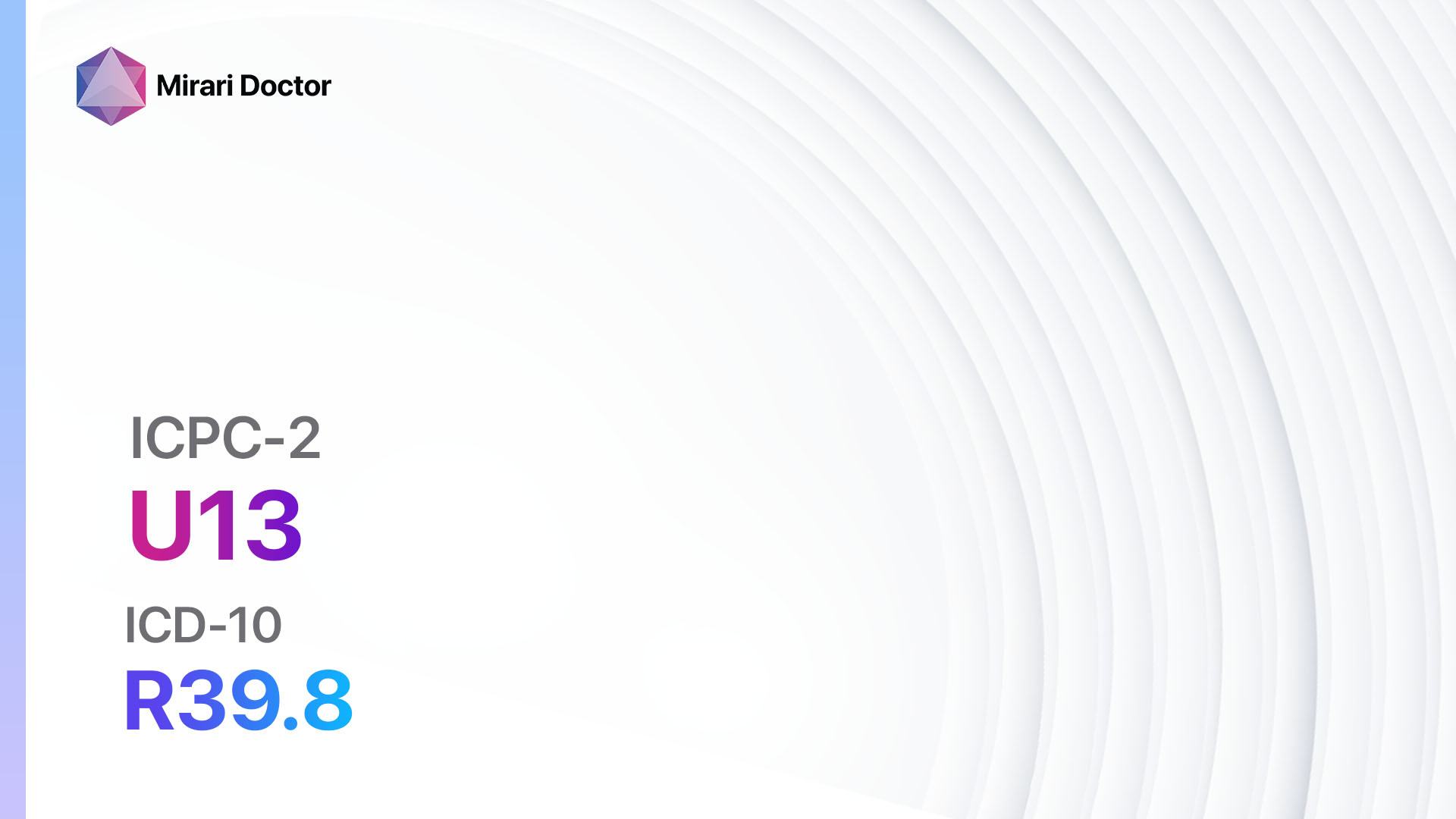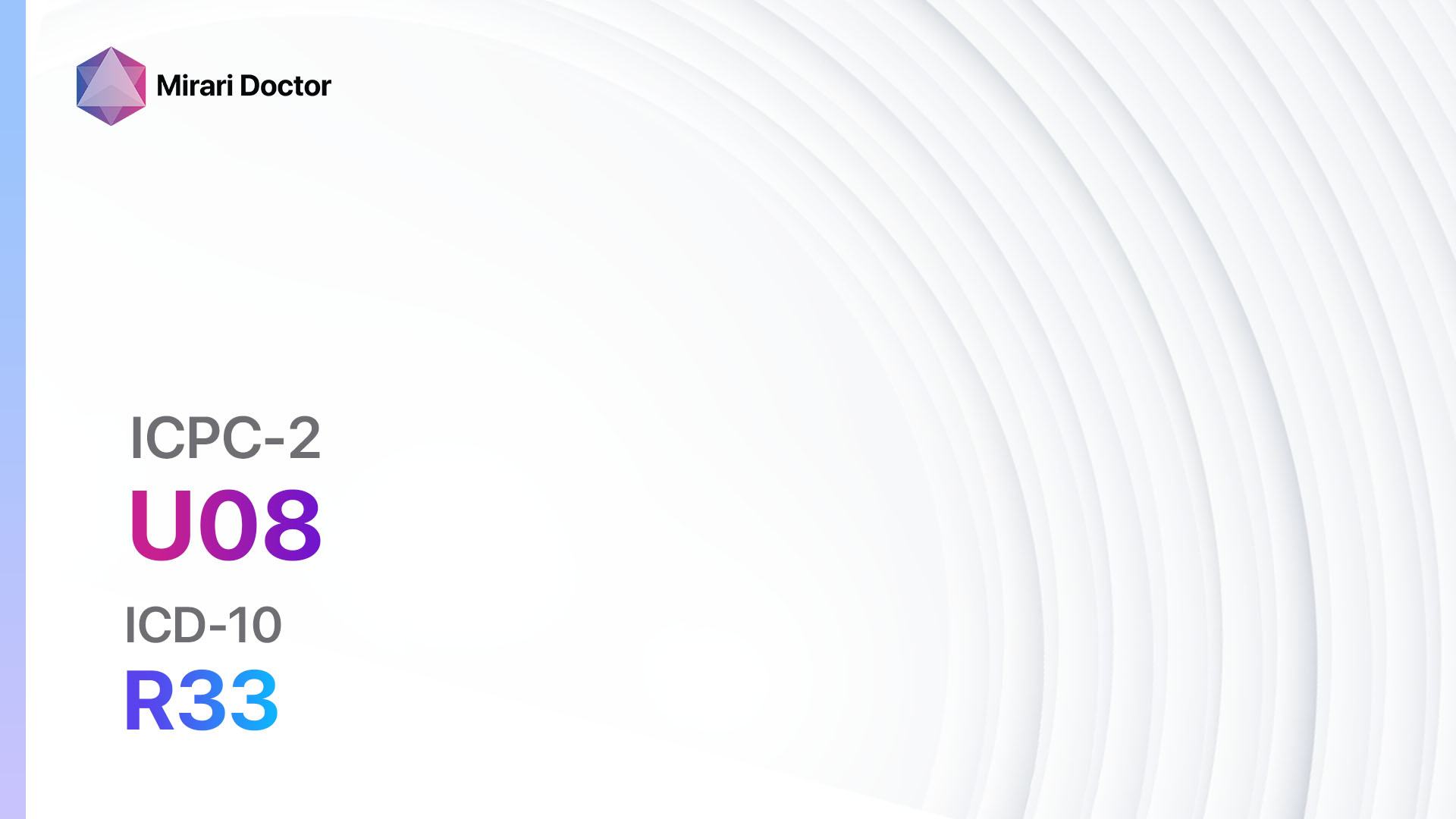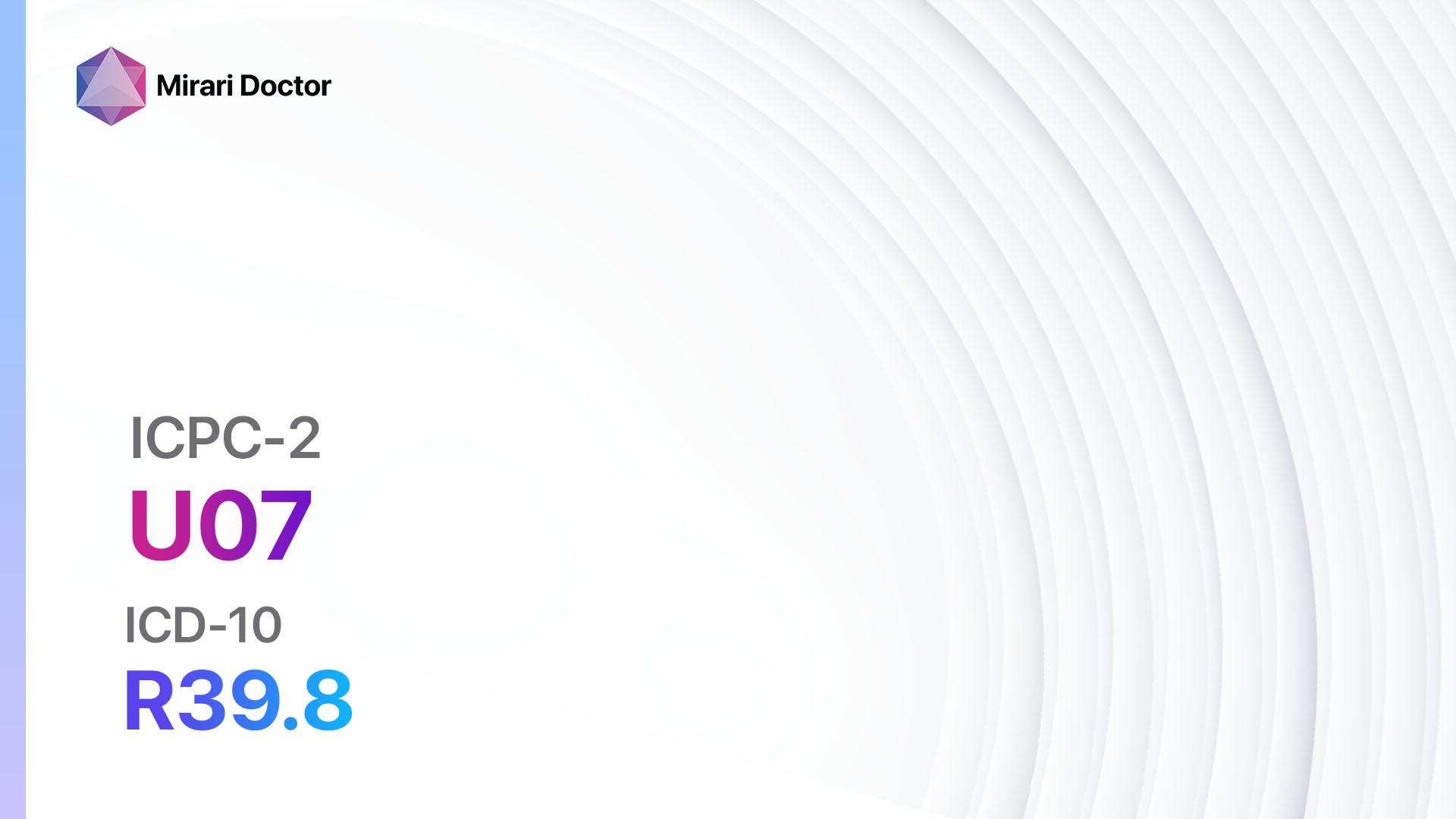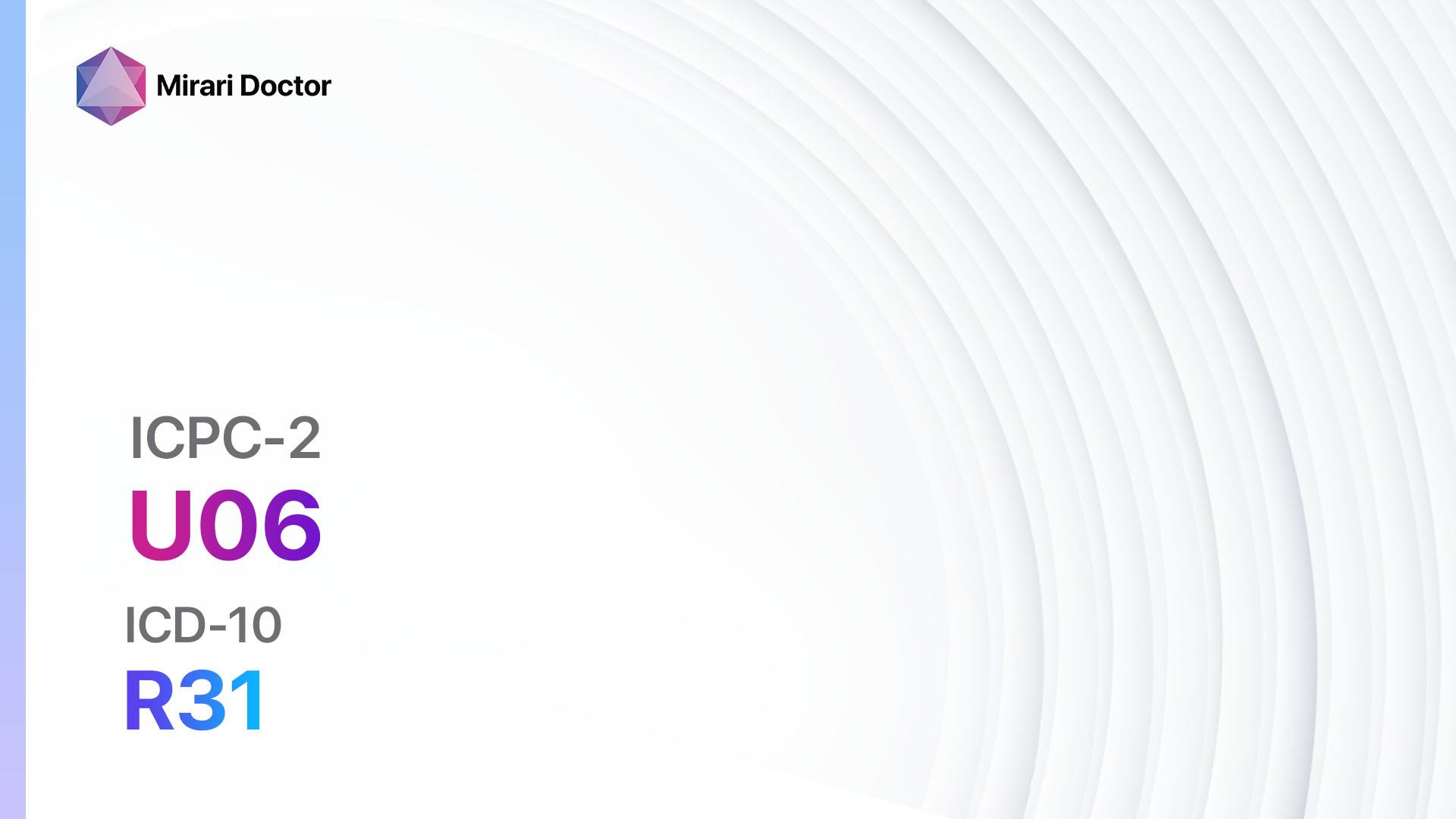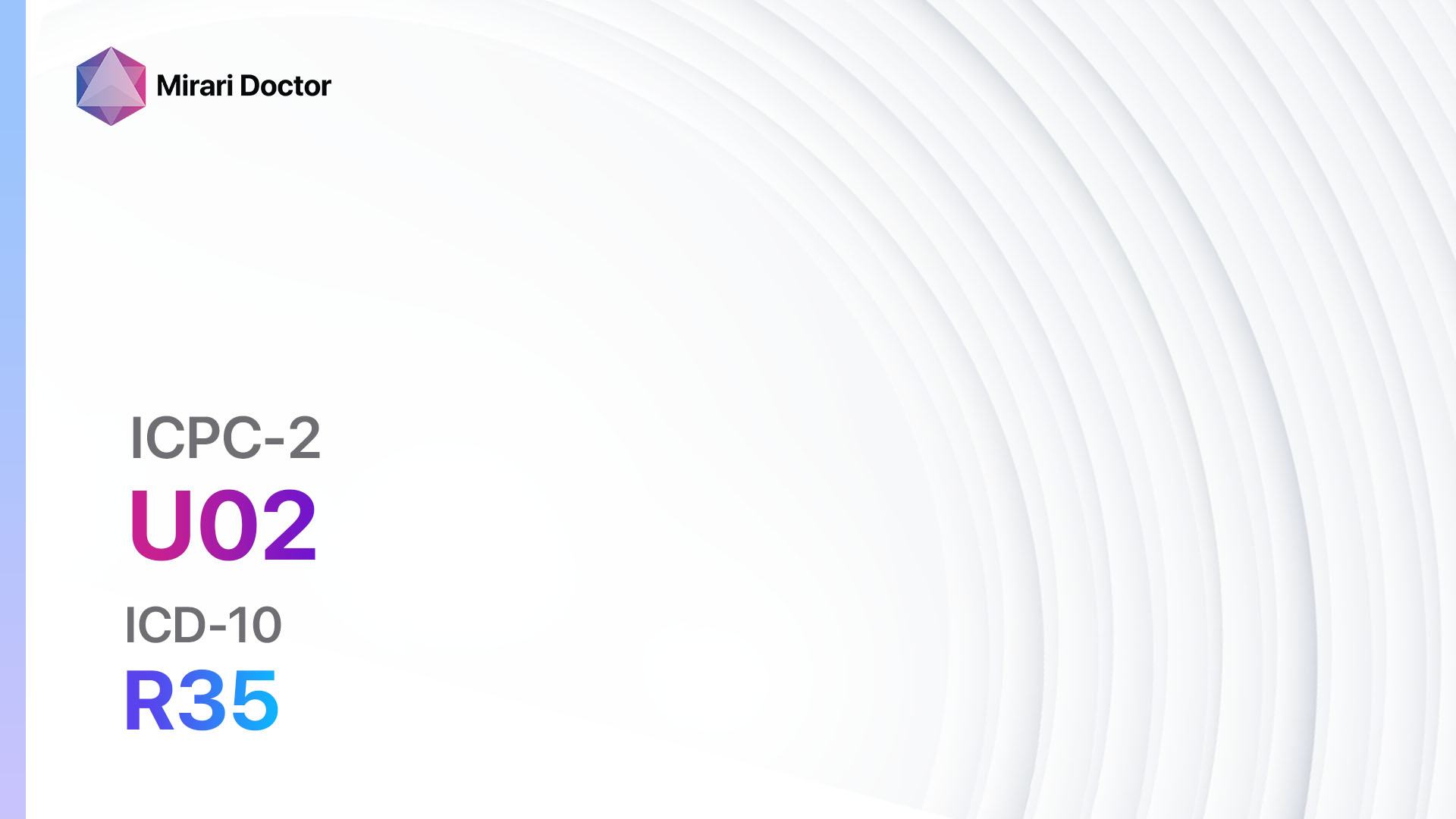
Introduction
Urinary frequency/urgency refers to the need to urinate frequently or urgently, often with a decreased bladder capacity. It can significantly impact a person’s quality of life and may be indicative of an underlying medical condition[1]. The aim of this guide is to provide a comprehensive overview of the symptoms, causes, diagnostic steps, possible interventions, and lifestyle modifications for urinary frequency/urgency.
Codes
Symptoms
- Increased frequency of urination
- Urgency to urinate
- Nocturia (waking up frequently at night to urinate)
- Incontinence (involuntary leakage of urine)
- Pain or discomfort during urination
- Blood in the urine[2]
Causes
- Urinary tract infection (UTI)
- Overactive bladder
- Bladder or urinary tract stones
- Bladder or urinary tract tumors
- Bladder or urinary tract inflammation
- Neurological conditions affecting bladder control (e.g., multiple sclerosis, Parkinson’s disease)
- Certain medications (e.g., diuretics, alpha-blockers)
- Psychological factors (e.g., anxiety, stress)[3]
Diagnostic Steps
Medical History
- Gather information about the patient’s urinary symptoms, including frequency, urgency, and any associated pain or discomfort.
- Inquire about the duration and progression of symptoms.
- Assess for any risk factors, such as a history of UTIs, bladder or urinary tract stones, or neurological conditions.
- Ask about any recent changes in medication or psychological stressors[4].
Physical Examination
- Perform a general physical examination to assess for any signs of infection or underlying medical conditions.
- Palpate the abdomen to check for bladder distention or tenderness.
- Evaluate the pelvic area for any abnormalities or signs of inflammation[5].
Laboratory Tests
- Urinalysis: Assess for the presence of infection, blood, or other abnormalities in the urine.
- Urine culture: Identify the specific bacteria causing a urinary tract infection, if present.
- Blood tests: Rule out underlying medical conditions, such as diabetes or kidney disease[6].
- Cystoscopy: A thin tube with a camera is inserted into the urethra and bladder to visualize the urinary tract and check for any abnormalities[9].
Diagnostic Imaging
- Ultrasound: Visualize the bladder and urinary tract to identify any structural abnormalities or stones.
- CT scan: Provide detailed images of the urinary system to detect tumors, stones, or other abnormalities.
- MRI: Assess the urinary tract and surrounding structures for any signs of inflammation or tumors[7].
Other Tests
- Urodynamic testing: Measures bladder pressure and urine flow rate to evaluate bladder function.
- Bladder diary: The patient records their fluid intake, urinary frequency, and urgency over a specific period to identify patterns and triggers[8].
Follow-up and Patient Education
- Schedule a follow-up appointment to review test results and discuss further management options.
- Provide education on lifestyle modifications and possible interventions to manage urinary frequency/urgency[10].
Possible Interventions
Traditional Interventions
Medications:
Top 5 drugs for Urinary frequency/urgency:
- Anticholinergic medications (e.g., Oxybutynin, Tolterodine):
- Cost: Generic versions can be $10-$50/month.
- Contraindications: Glaucoma, urinary retention, gastrointestinal obstruction.
- Side effects: Dry mouth, constipation, blurred vision.
- Severe side effects: Urinary retention, confusion.
- Drug interactions: Other anticholinergic medications.
- Warning: Use with caution in elderly patients.
- Beta-3 adrenergic agonists (e.g., Mirabegron):
- Cost: $100-$200/month.
- Contraindications: Severe uncontrolled hypertension, severe hepatic impairment.
- Side effects: Increased blood pressure, headache, urinary tract infection.
- Severe side effects: Angioedema, hypersensitivity reactions.
- Drug interactions: CYP2D6 inhibitors, CYP3A4 inhibitors.
- Warning: Monitor blood pressure regularly.
- Alpha-blockers (e.g., Tamsulosin):
- Cost: Generic versions can be $10-$50/month.
- Contraindications: Hypotension, severe liver impairment.
- Side effects: Dizziness, nasal congestion, retrograde ejaculation.
- Severe side effects: Priapism, angioedema.
- Drug interactions: Other alpha-blockers, PDE5 inhibitors.
- Warning: Use with caution in patients with a history of orthostatic hypotension.
- Tricyclic antidepressants (e.g., Amitriptyline, Imipramine):
- Cost: Generic versions can be $10-$50/month.
- Contraindications: Recent myocardial infarction, narrow-angle glaucoma.
- Side effects: Sedation, dry mouth, constipation.
- Severe side effects: Cardiac arrhythmias, seizures.
- Drug interactions: MAO inhibitors, other serotonergic drugs.
- Warning: Use with caution in elderly patients and those with cardiac conditions.
- Desmopressin:
- Cost: $50-$100/month.
- Contraindications: Hyponatremia, severe renal impairment.
- Side effects: Headache, nausea, abdominal pain.
- Severe side effects: Water intoxication, seizures.
- Drug interactions: NSAIDs, tricyclic antidepressants.
- Warning: Monitor serum sodium levels regularly.
Alternative Drugs:
- Botulinum toxin injections: Used in refractory cases to relax the bladder muscles. Cost: $500-$1000 per injection.
- Alpha-1 adrenergic blockers: Can be used in men with urinary frequency/urgency due to prostate enlargement. Cost: $10-$50/month.
- Estrogen therapy: For postmenopausal women with urinary symptoms. Cost: $20-$50/month.
- Antidepressants: Selective serotonin reuptake inhibitors (SSRIs) or serotonin-norepinephrine reuptake inhibitors (SNRIs) may be used in patients with coexisting depression or anxiety. Cost: $10-$50/month.
- Pain medications: Nonsteroidal anti-inflammatory drugs (NSAIDs) or opioids may be prescribed for pain relief in cases of bladder inflammation. Cost: Varies depending on the specific medication.
Surgical Procedures:
- Bladder augmentation: Enlarges the bladder capacity by using a segment of the patient’s intestine. Cost: $20,000 to $50,000.
- Sacral neuromodulation: Implants a device that stimulates the sacral nerves to improve bladder control. Cost: $20,000 to $40,000.
- Botulinum toxin injections: Injected into the bladder muscles to relax them and reduce urinary frequency/urgency. Cost: $500 to $1000 per injection.
Alternative Interventions
- Acupuncture: May help improve bladder control and reduce urinary frequency/urgency. Cost: $60-$120 per session.
- Behavioral therapy: Includes bladder training, pelvic floor exercises, and biofeedback to improve bladder control. Cost: Varies depending on the therapist or program.
- Herbal supplements: Some herbs, such as pumpkin seed extract or saw palmetto, may have potential benefits for urinary symptoms. Cost: Varies depending on the specific supplement.
- Homeopathic remedies: Certain homeopathic remedies, such as Cantharis or Equisetum, are believed to alleviate urinary frequency/urgency. Cost: Varies depending on the specific remedy.
- Hypnotherapy: Hypnosis techniques may help reduce anxiety and improve bladder control. Cost: $100-$200 per session.
Lifestyle Interventions
- Fluid management: Limiting fluid intake, especially before bedtime, can help reduce urinary frequency/urgency. Cost: None.
- Bladder training: Gradually increasing the time between bathroom visits to train the bladder to hold more urine. Cost: None.
- Pelvic floor exercises: Strengthening the pelvic floor muscles can improve bladder control. Cost: None.
- Dietary modifications: Avoiding bladder irritants, such as caffeine, alcohol, and spicy foods, may alleviate urinary symptoms. Cost: None.
- Stress management: Techniques such as relaxation exercises, meditation, or yoga can help reduce stress-related urinary symptoms. Cost: Varies depending on the specific method.
It is important to note that the cost ranges provided are approximate and may vary depending on the location and availability of the interventions.
Mirari Cold Plasma Alternative Intervention
Understanding Mirari Cold Plasma
- Safe and Non-Invasive Treatment: Mirari Cold Plasma is a safe and non-invasive treatment option for various skin conditions. It does not require incisions, minimizing the risk of scarring, bleeding, or tissue damage.
- Efficient Extraction of Foreign Bodies: Mirari Cold Plasma facilitates the removal of foreign bodies from the skin by degrading and dissociating organic matter, allowing easier access and extraction.
- Pain Reduction and Comfort: Mirari Cold Plasma has a local analgesic effect, providing pain relief during the treatment, making it more comfortable for the patient.
- Reduced Risk of Infection: Mirari Cold Plasma has antimicrobial properties, effectively killing bacteria and reducing the risk of infection.
- Accelerated Healing and Minimal Scarring: Mirari Cold Plasma stimulates wound healing and tissue regeneration, reducing healing time and minimizing the formation of scars.
Mirari Cold Plasma Prescription
Video instructions for using Mirari Cold Plasma Device – U02 Urinary frequency/urgency (ICD-10:R35)
| Mild | Moderate | Severe |
| Mode setting: 1 (Infection) Location: 2 (Prostate & Uterus) Morning: 15 minutes, Evening: 15 minutes |
Mode setting: 1 (Infection) Location: 2 (Prostate & Uterus) Morning: 30 minutes, Lunch: 30 minutes, Evening: 30 minutes |
Mode setting: 1 (Infection) Location: 2 (Prostate & Uterus) Morning: 30 minutes, Lunch: 30 minutes, Evening: 30 minutes |
| Mode setting: 6 (Liver/Kidney Therapy) Location: 2 (Prostate & Uterus) Morning: 15 minutes, Evening: 15 minutes |
Mode setting: 6 (Liver/Kidney Therapy) Location: 2 (Prostate & Uterus) Morning: 30 minutes, Lunch: 30 minutes, Evening: 30 minutes |
Mode setting: 6 (Liver/Kidney Therapy) Location: 2 (Prostate & Uterus) Morning: 30 minutes, Lunch: 30 minutes, Evening: 30 minutes |
| Mode setting: 7 (Immunotherapy) Location: 6 (Throat, Lymphatic & Thyroid) Morning: 15 minutes, Evening: 15 minutes |
Mode setting:7 (Immunotherapy) Location: 6 (Throat, Lymphatic & Thyroid) Morning: 30 minutes, Lunch: 30 minutes, Evening: 30 minutes |
Mode setting:7 (Immunotherapy) Location: 6 (Throat, Lymphatic & Thyroid) Morning: 30 minutes, Lunch: 30 minutes, Evening: 30 minutes |
| Mode setting: 7 (Immunotherapy) Location: 1 (Sacrum) Morning: 15 minutes, Evening: 15 minutes |
Mode setting:7 (Immunotherapy) Location: 1 (Sacrum) Morning: 30 minutes, Lunch: 30 minutes, Evening: 30 minutes |
Mode setting:7 (Immunotherapy) Location: 1 (Sacrum) Morning: 30 minutes, Lunch: 30 minutes, Evening: 30 minutes |
| Total Morning: 60 minutes approx. $10 USD, Evening: 60 minutes approx. $10 USD |
Total Morning: 120 minutes approx. $20 USD, Lunch: 120 minutes approx. $20 USD, Evening: 120 minutes approx. $20 USD, |
Total Morning: 120 minutes approx. $20 USD, Lunch: 120 minutes approx. $20 USD, Evening: 120 minutes approx. $20 USD, |
| Usual treatment for 7-60 days approx. $140 USD – $1200 USD | Usual treatment for 6-8 weeks approx. $2,520 USD – $3,360 USD |
Usual treatment for 3-6 months approx. $5,400 USD – $10,800 USD
|
 |
|
Use the Mirari Cold Plasma device to treat Urinary frequency/urgency effectively.
WARNING: MIRARI COLD PLASMA IS DESIGNED FOR THE HUMAN BODY WITHOUT ANY ARTIFICIAL OR THIRD PARTY PRODUCTS. USE OF OTHER PRODUCTS IN COMBINATION WITH MIRARI COLD PLASMA MAY CAUSE UNPREDICTABLE EFFECTS, HARM OR INJURY. PLEASE CONSULT A MEDICAL PROFESSIONAL BEFORE COMBINING ANY OTHER PRODUCTS WITH USE OF MIRARI.
Step 1: Cleanse the Skin
- Start by cleaning the affected area of the skin with a gentle cleanser or mild soap and water. Gently pat the area dry with a clean towel.
Step 2: Prepare the Mirari Cold Plasma device
- Ensure that the Mirari Cold Plasma device is fully charged or has fresh batteries as per the manufacturer’s instructions. Make sure the device is clean and in good working condition.
- Switch on the Mirari device using the power button or by following the specific instructions provided with the device.
- Some Mirari devices may have adjustable settings for intensity or treatment duration. Follow the manufacturer’s instructions to select the appropriate settings based on your needs and the recommended guidelines.
Step 3: Apply the Device
- Place the Mirari device in direct contact with the affected area of the skin. Gently glide or hold the device over the skin surface, ensuring even coverage of the area experiencing.
- Slowly move the Mirari device in a circular motion or follow a specific pattern as indicated in the user manual. This helps ensure thorough treatment coverage.
Step 4: Monitor and Assess:
- Keep track of your progress and evaluate the effectiveness of the Mirari device in managing your Urinary frequency/urgency. If you have any concerns or notice any adverse reactions, consult with your health care professional.
Note
This guide is for informational purposes only and should not replace the advice of a medical professional. Always consult with your healthcare provider or a qualified medical professional for personal advice, diagnosis, or treatment. Do not solely rely on the information presented here for decisions about your health. Use of this information is at your own risk. The authors of this guide, nor any associated entities or platforms, are not responsible for any potential adverse effects or outcomes based on the content.
Mirari Cold Plasma System Disclaimer
- Purpose: The Mirari Cold Plasma System is a Class 2 medical device designed for use by trained healthcare professionals. It is registered for use in Thailand and Vietnam. It is not intended for use outside of these locations.
- Informational Use: The content and information provided with the device are for educational and informational purposes only. They are not a substitute for professional medical advice or care.
- Variable Outcomes: While the device is approved for specific uses, individual outcomes can differ. We do not assert or guarantee specific medical outcomes.
- Consultation: Prior to utilizing the device or making decisions based on its content, it is essential to consult with a Certified Mirari Tele-Therapist and your medical healthcare provider regarding specific protocols.
- Liability: By using this device, users are acknowledging and accepting all potential risks. Neither the manufacturer nor the distributor will be held accountable for any adverse reactions, injuries, or damages stemming from its use.
- Geographical Availability: This device has received approval for designated purposes by the Thai and Vietnam FDA. As of now, outside of Thailand and Vietnam, the Mirari Cold Plasma System is not available for purchase or use.
References
- Mayo Clinic. (2022). Overactive bladder – Symptoms and causes. Retrieved from https://www.mayoclinic.org/diseases-conditions/overactive-bladder/symptoms-causes/syc-20355715
- Healthline. (2021). Frequent or Urgent Urination: Causes and Relief. Retrieved from https://www.healthline.com/health/frequent-or-urgent-urination
- Cleveland Clinic. (2022). Overactive Bladder (OAB): Causes, Symptoms & Treatment. Retrieved from https://my.clevelandclinic.org/health/diseases/14248-overactive-bladder
- MSD Manual Professional Edition. (n.d.). Urinary Frequency. Retrieved from https://www.msdmanuals.com/professional/genitourinary-disorders/symptoms-of-genitourinary-disorders/urinary-frequency
- Medscape. (n.d.). Overactive Bladder Clinical Presentation: History, Physical, Comorbidities. Retrieved from https://emedicine.medscape.com/article/459340-clinical
- National Institute of Diabetes and Digestive and Kidney Diseases. (n.d.). Urinary Tract Imaging. Retrieved from https://www.niddk.nih.gov/health-information/diagnostic-tests/urinary-tract-imaging
- Vinmec International Hospital. (n.d.). Can a bladder ultrasound detect overactive bladder? Retrieved from https://www.vinmec.com/en/news/health-news/general-health-check/can-a-bladder-ultrasound-detect-overactive-bladder/
- The Urology Group of Virginia. (n.d.). Urinary Frequency & Urgency. Retrieved from https://www.urologygroupvirginia.com/urologic-care/incontinence/urinary-frequency-urgency-and-overactive-bladder
- Mayo Clinic. (2021). Frequent urination Causes. Retrieved from https://www.mayoclinic.org/symptoms/frequent-urination/basics/causes/sym-20050712
- ScienceDirect. (n.d.). Urinary Urgency – an overview. Retrieved from https://www.sciencedirect.com/topics/medicine-and-dentistry/urinary-urgency
Related articles
Made in USA


